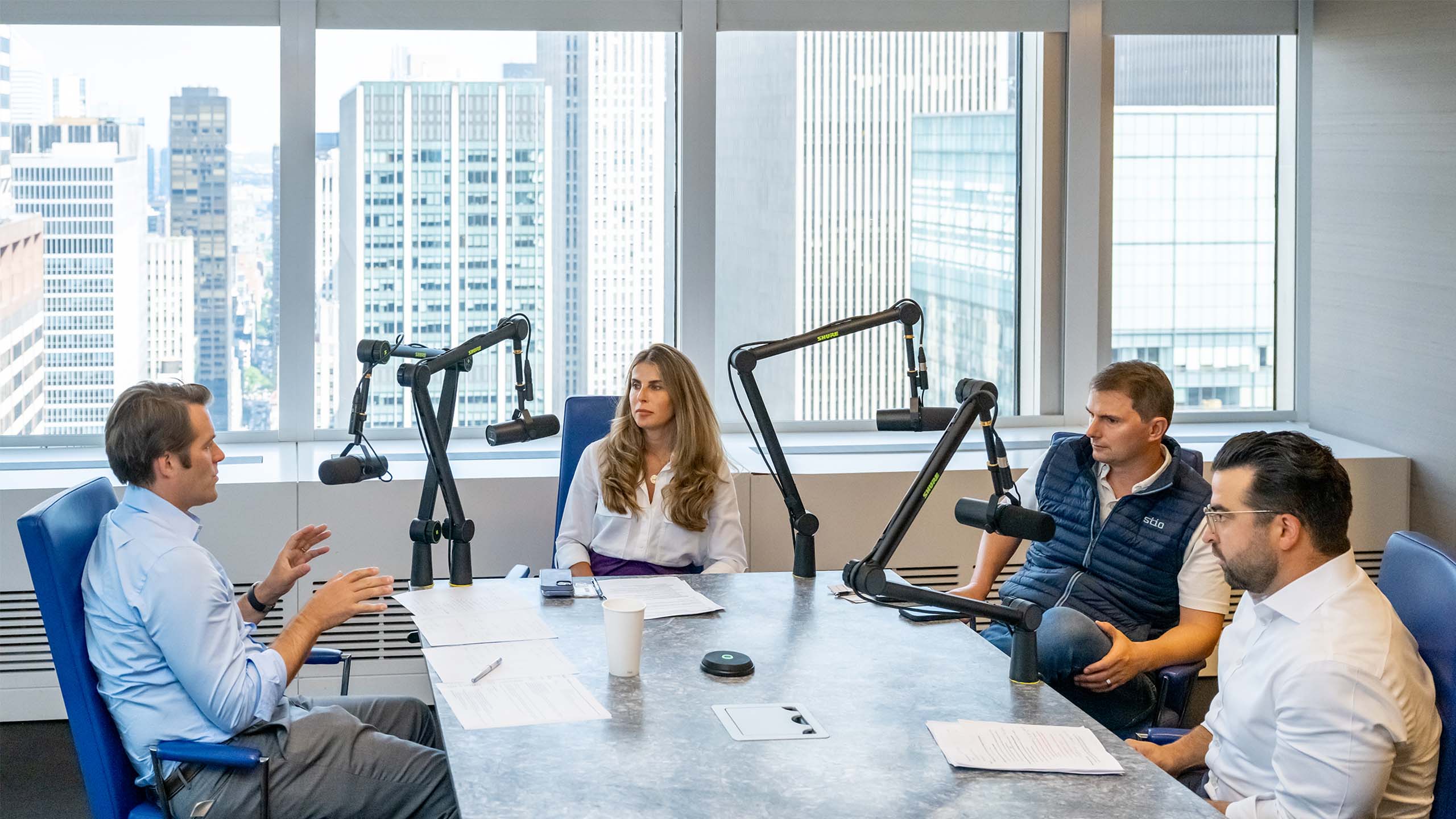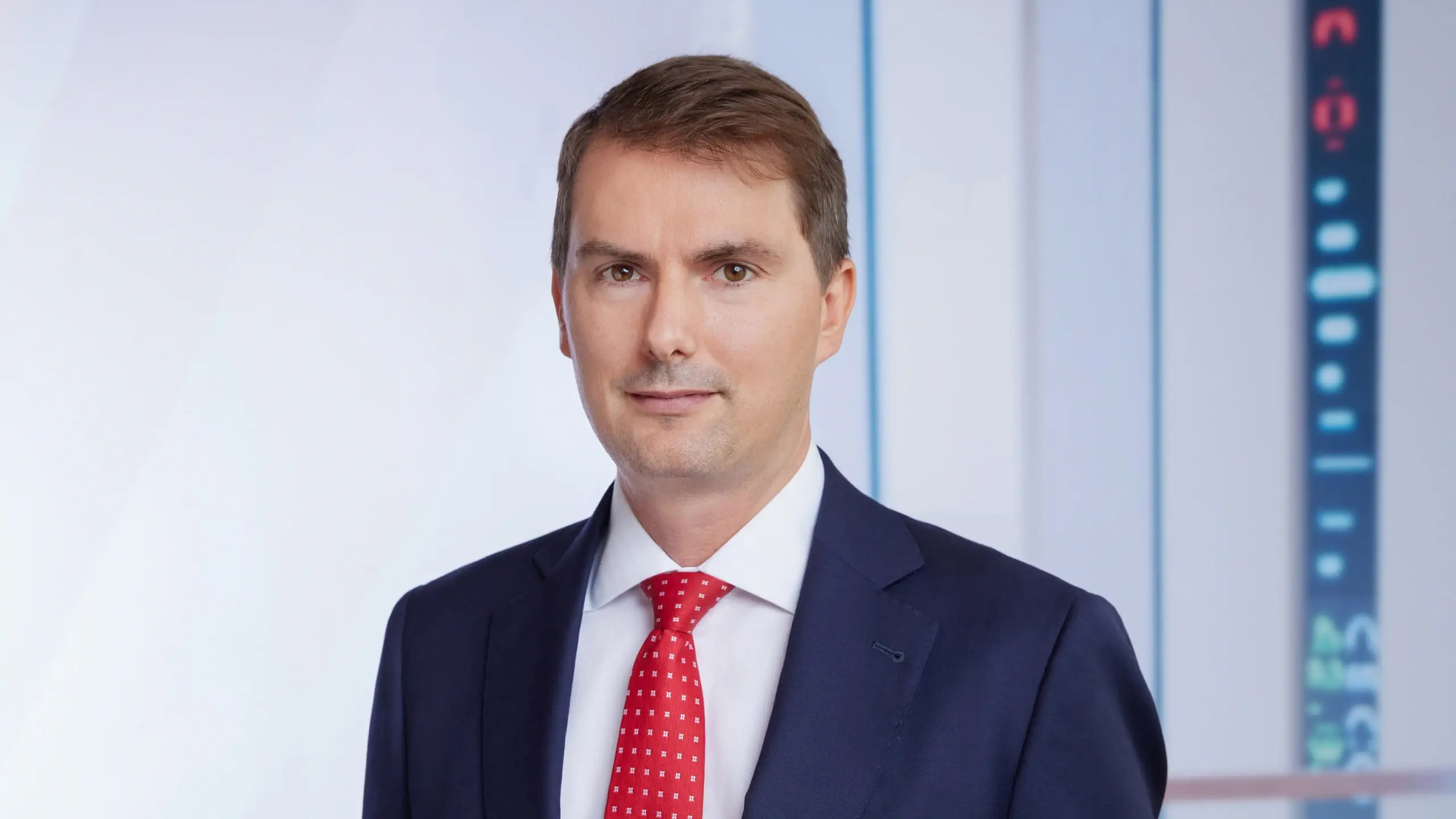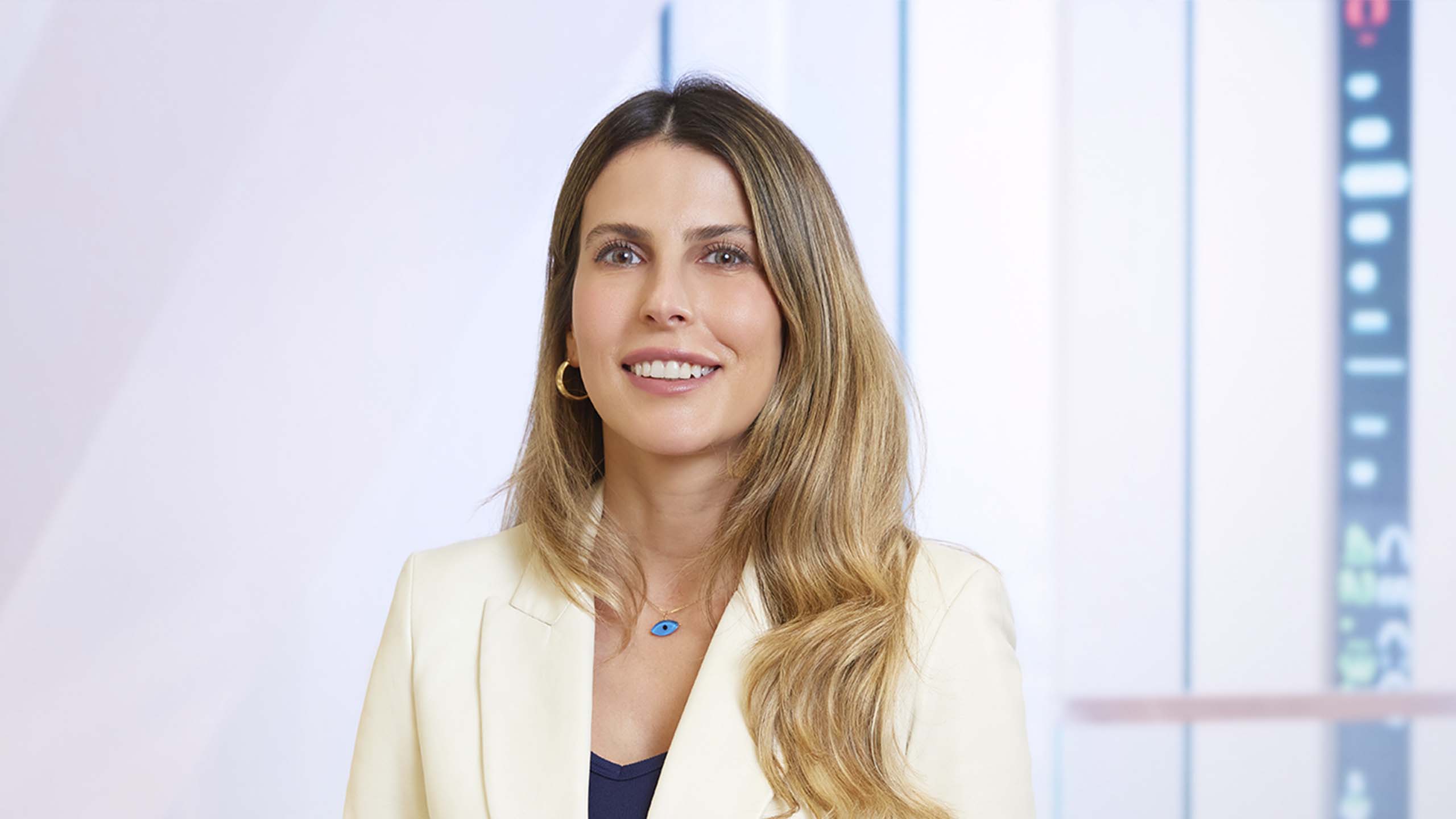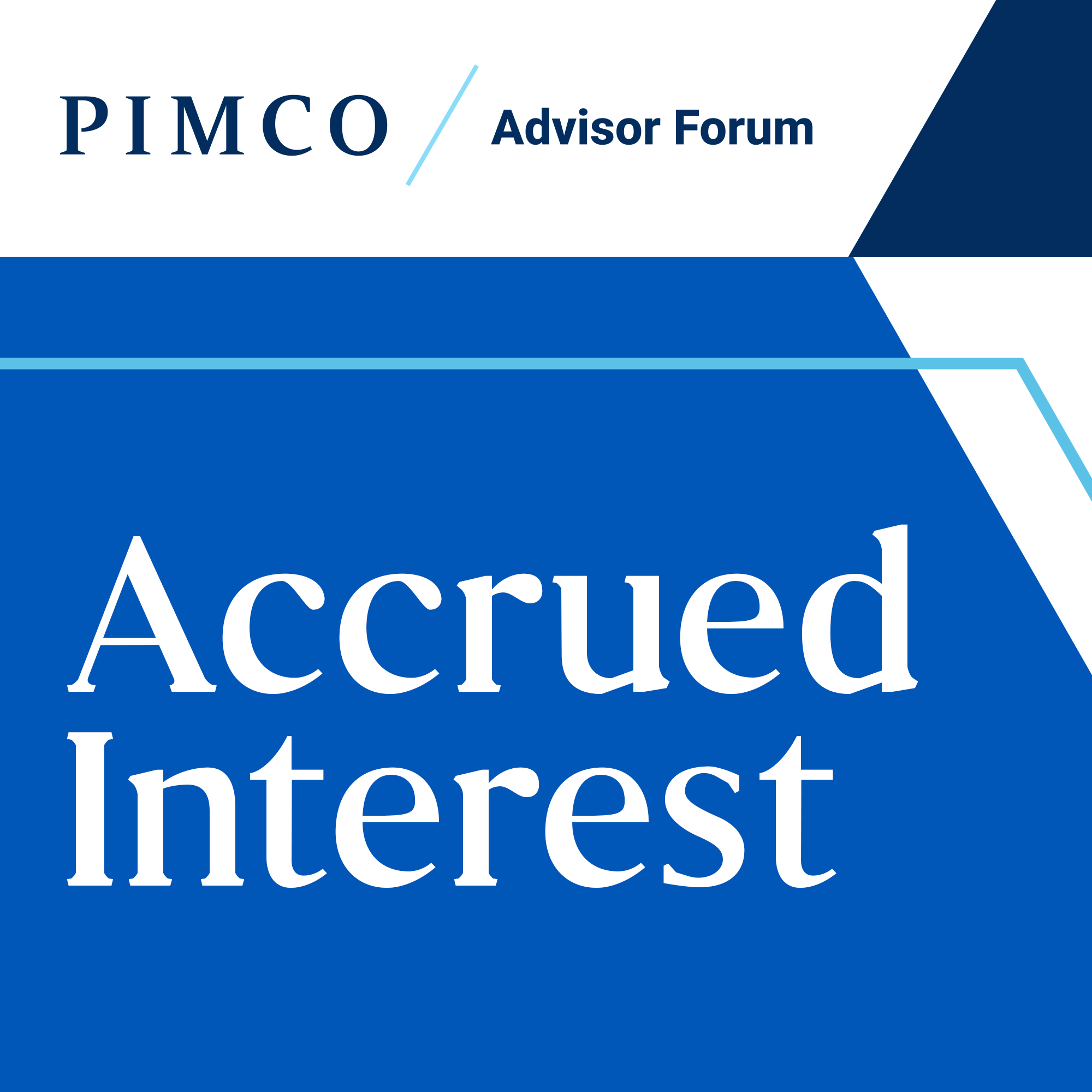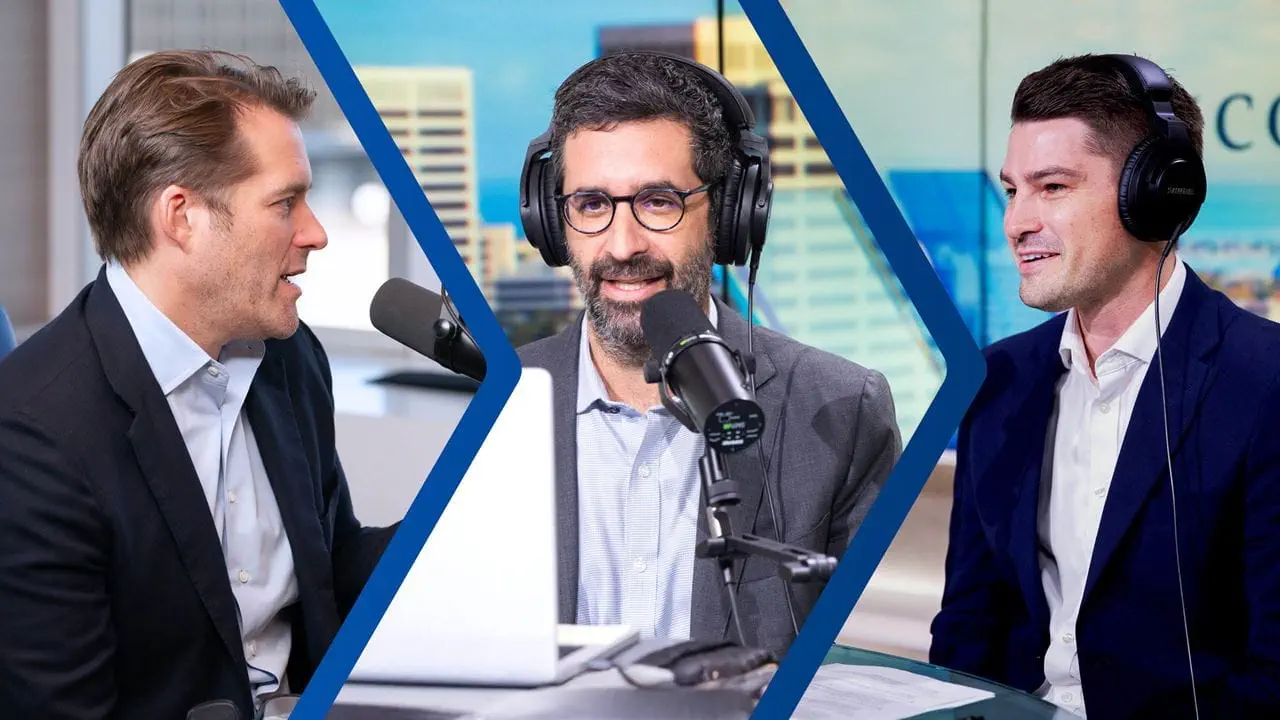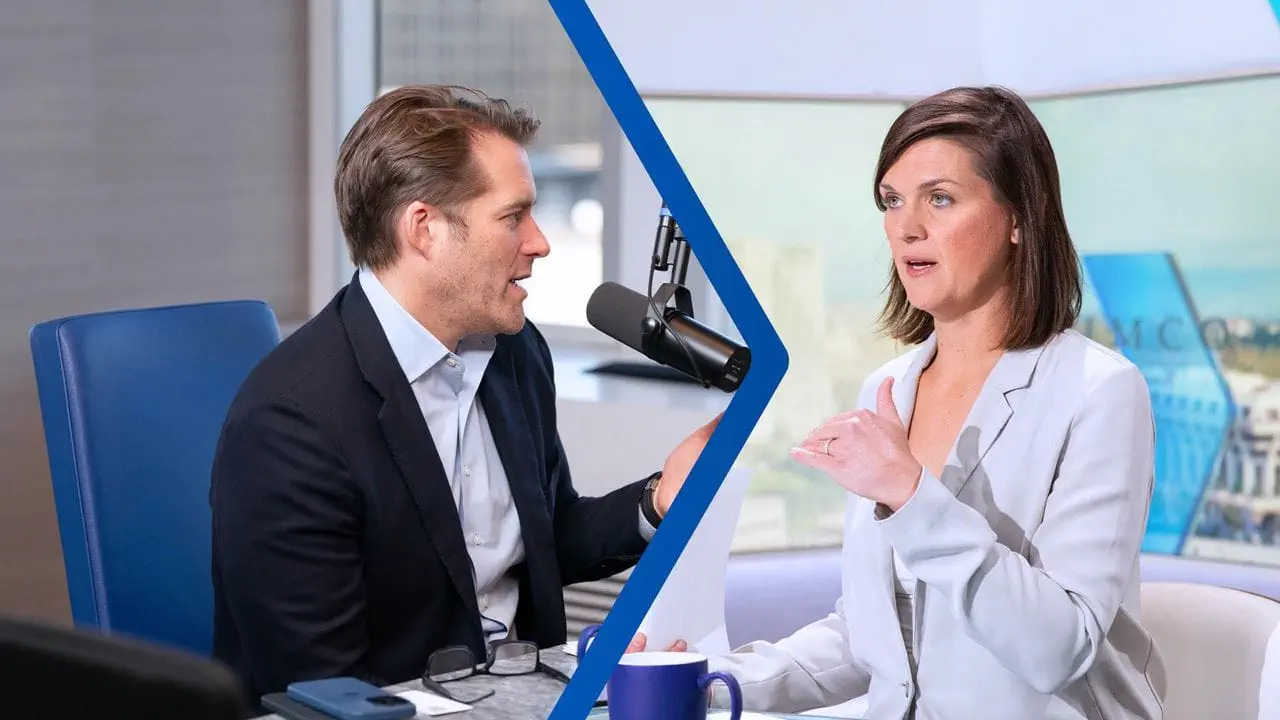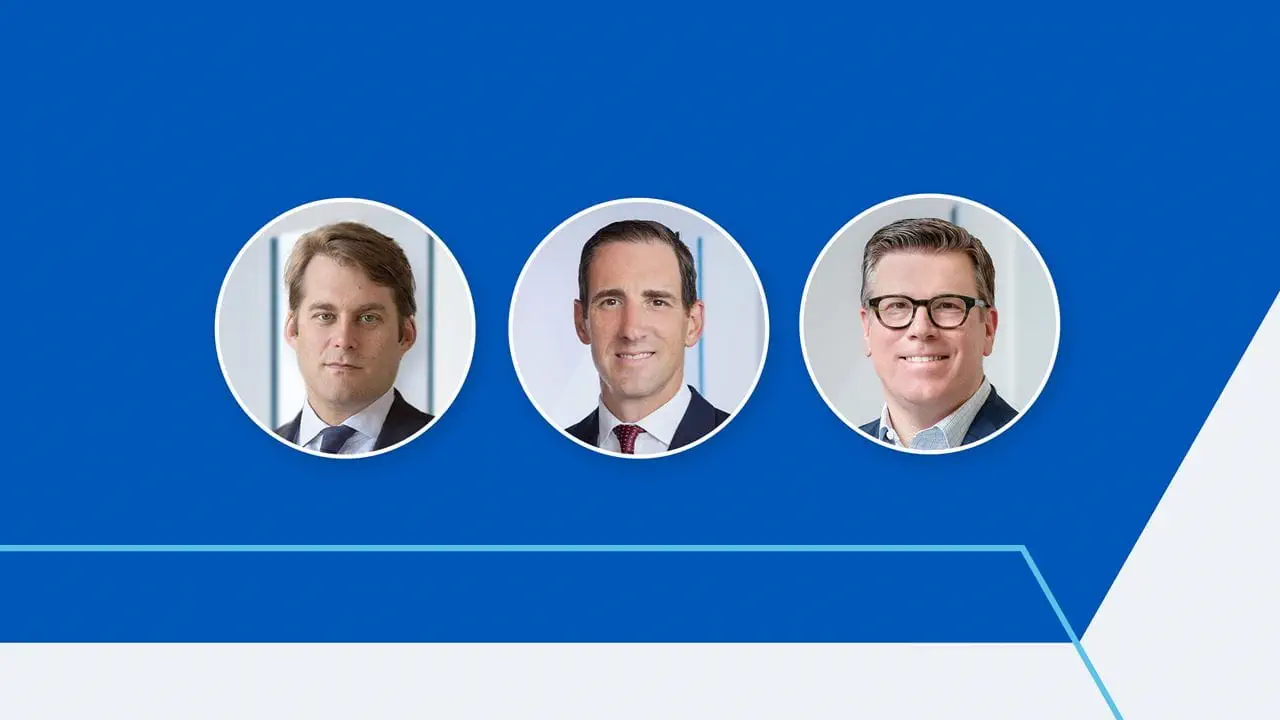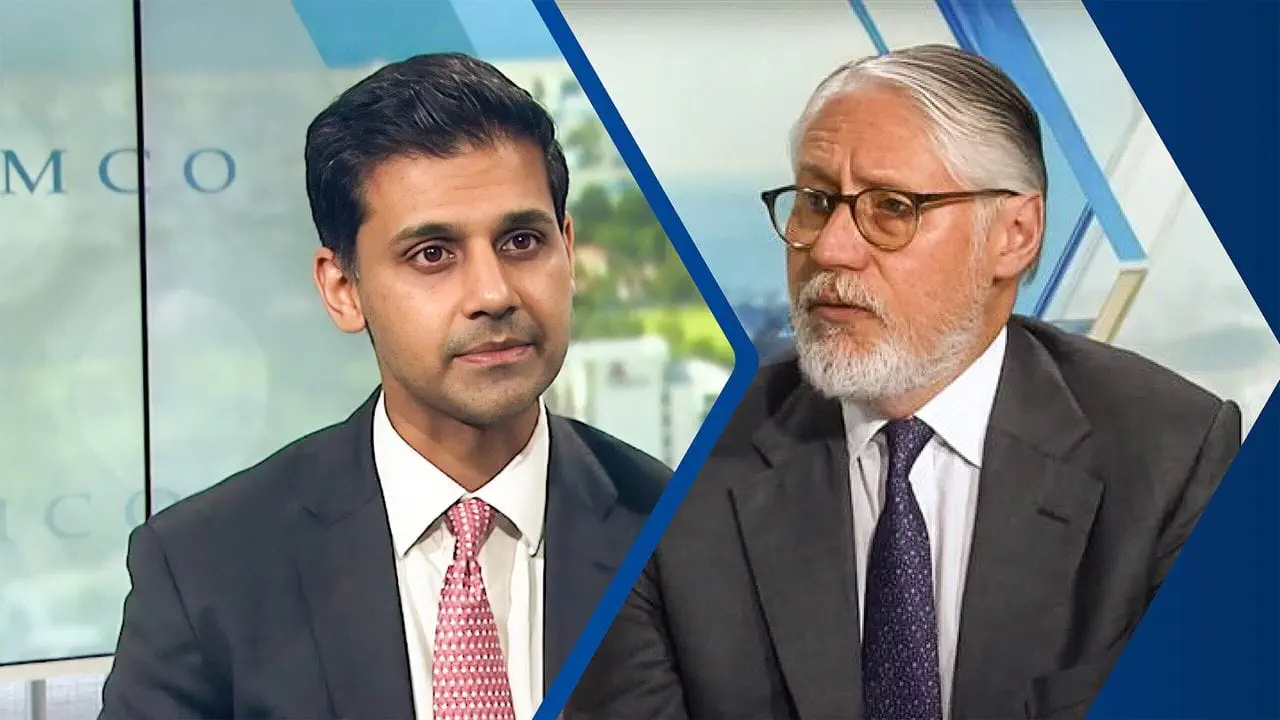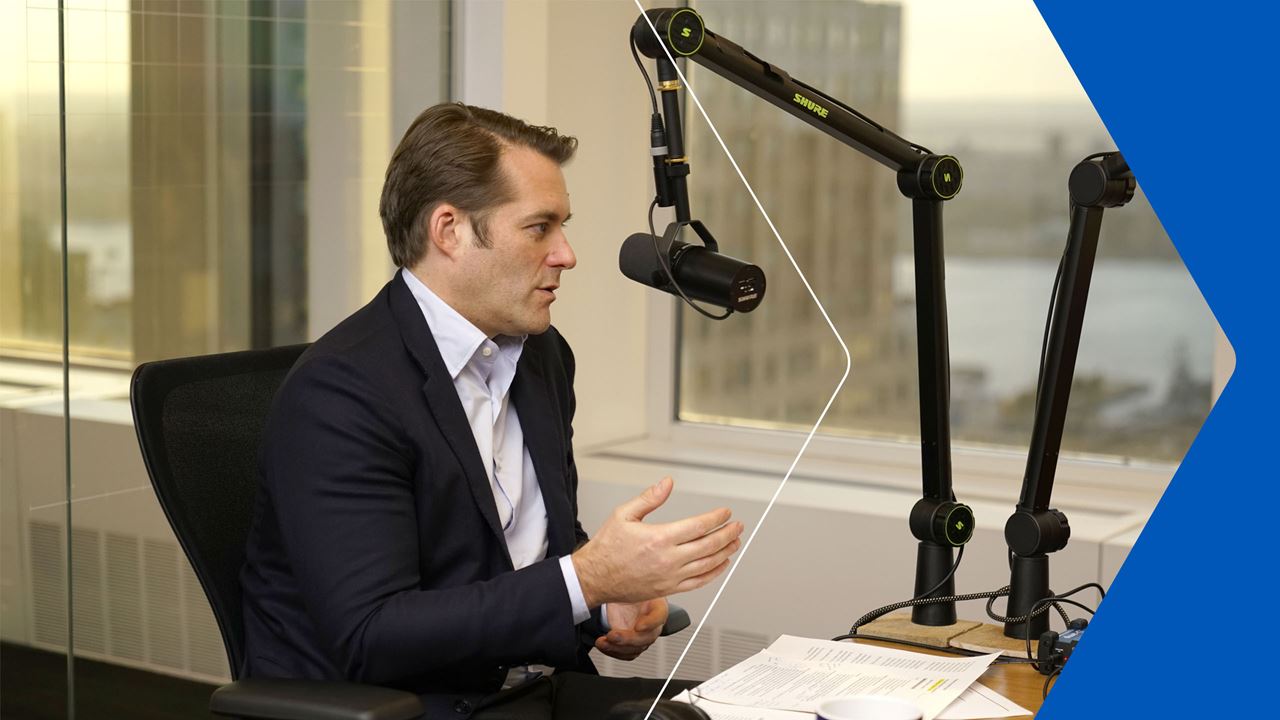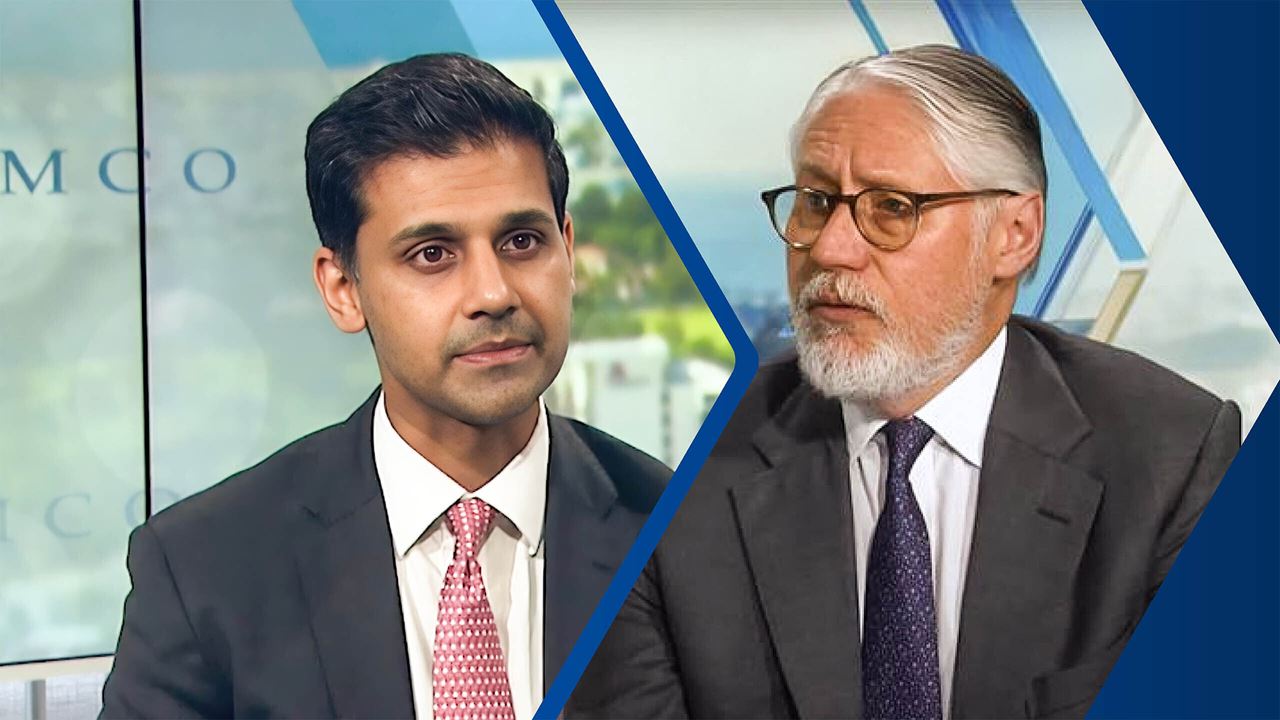Please stay tuned after the conclusion of the podcast for additional important information.
GREG HALL: Hello, everybody! Welcome to another episode of Accrued Interest, PIMCO's podcast dedicated to financial advisors and their clients. My name's Greg Hall. I lead the US Wealth Management business here at PIMCO. And as usual, I'll be your host for today's discussion. Today's topic, it's something I'm really excited about, and you know, it, well, I'll tell you what it is. It's commercial real estate, opportunities in commercial real estate. And it occurred to me as we were preparing for the episode today that I'm surprised we haven't tackled this topic already.
It's real estate in general is, of course, very important to most, you know, two legged investors. Most of your clients if your financial advisors, and then investing in real estate professionally as an asset class has really been one of the key themes within wealth management over the last, you know, shall we say, 10 or 5 years.
But of late you know, given some of the changes in the market and evolution of the market cycle, I hear it being talked about less and less. It's sort of fallen out of conversation. It, when I go to conferences, it used to be topics one through five on the agenda opportunities in real estate you know, for individual investors. And that seems to have died down somewhat. And we're gonna talk about why that is.
But I just note here at the top of the conversation that sometimes when the noise level around an opportunity set diminishes, that's a signal that there are terrific opportunities available there. And we think that that might be the case right now within real estate, certainly not a straightforward story, not a story without its twists and turns and nuances which is why I've surrounded myself today with some experts in the field.
So, joining me for today's conversation Russ Gannaway who's a managing director here at PIMCO. He has grown up in the real estate business here with us across both the public and the private side. He is a senior portfolio manager involved in many of the funds where we invest in real estate assets both debt and equity, public and private. He's truly looking at the full panoply and full spectrum of real estate opportunities.
So, Russ, it's awesome to have you here. Thanks for joining us! With Russ, I've got the pleasure to introduce you to Seray Incoglu. Seray joined us a little bit more recently than Russ. She's fully focused on the private side. She focuses on originating and managing loans to real estate owners on the private side of our business.
Seray, thank you for being here and being part of the conversation. And then as always we have one of our account managers who works directly with financial advisors joining for the conversation. He's here to represent your questions, your interests, Gino Gabbianelli covering the city of New York for PIMCO, a fine real estate driven city. So we figured you were the right guy to have with us. But Gino, thanks for joining us. Can I ask each of you guys just to really quickly and kind of introduce yourselves in terms of your path of how you got to PIMCO while you're sitting at the table here? Russ?
RUSS GANNAWAY: Sure. I've been at PIMCO for 16 years now. Ran the CMBS desk for about a decade more recently. As Greg mentioned, I've been focused more on the private side of things both real estate and non-real estate focused on some of our hedge funds, private credit funds. But as Greg mentioned, grew up in real estate before PIMCO, I was with a real estate private equity shop here in New York, working for their mortgage REIT division where we were buying CNBS-B pieces and repackaging them into CRE CDOs. So any guesses how that ended?
GREG HALL: Usually when the acronyms come out, jump in, but we're gonna leave that one. I think...
RUSS GANNAWAY: ...valuable lessons early in my career,
GREG HALL: Always better early in the career. Seray what about you?
SERAY INCOGLU: So it's my fifth year at PIMCO. I started off basically on the origination side for Siri credit investments on the private side. I've led the capital markets team on financing our physicians both on the credit and the equity side. Now, I'm helping lead our asset management platform for the credit business overall on CRE. I'm actually celebrating my 20th year being a commercial real estate lender this month.
So dating back, you know, 20 years, I've done both originations on the public side the private side, and also have done my fair bit of workouts during the last cycle and sort of somewhat this cycle as well.
GREG HALL: Yeah, it's an underappreciated element of being an investor. I think sometimes, especially when the cycles lasted, as long as the one that we're currently in has, is it does pay to have seen some things break, right?
SERAY INCOGLU: Absolutely. Absolutely. I honestly, it's hard to find that level of experience, one, because it's not fun. It's not a fun job to do the stress workout, right?
GREG HALL: Did it workout?
SERAY INCOGLU: Yeah. But it's such a key element, especially to have in your sort of back burner when you're originating. 'cause you know what works and what doesn't work.
GREG HALL: Yeah. Well, and you've done the full lifecycle. You make the loan, you manage the loan, take care of it when it breaks and obviously financing it on the back end. So that's perfect. That's gonna be great for today's conversation. By the way, I have met people who really do enjoy the workout process, they tend to be quite frightening. Gino?
GINO GABBIANELLI: Gino Gabbianelli, senior vice president, been with PIMCO over thirteen and a half years. I actually started on the internal sales desk in this building on the 44th floor, 1633 Broadway. I piloted what is now referred to as our BDM program at the time it was called our Hybrid Sales Program. I covered the Washington DC and Maryland market from 2015 to 20. One of the few people to move back to New York City during 2020, where I've been covering Manhattan wires for the last five and a half years.
GREG HALL: That's fabulous! And I do appreciate the detailed rundown of the address and floor of the building you work in. It's in keeping with the real estate theme of today's conversation. All right. So let's, I think, you know, I think today what we're hoping to do is give advisors listening to the call, a bit of a sense of the opportunity set and kind of a complicated landscape within real estate and within the broader macro economy. And really, the only way for me, I think, to kind of get there is to tell the story of real estate over the last, you know, 10 or 15 years.
And it's a big story. It's a complicated story. I'm gonna turn it over to Russ and just, I think a good maybe framework for this is a lot of advisors and their investors certainly not all of them, but a lot of them began to think of real estate as an investible diversified asset class.
As the private REITs were sort of, they reemerged from a kind of a renaissance process and call it mid-teens-ish. And so maybe you could just sort of walk us through kind of those post-crisis years, the rise of the private REIT, and then we'll kind of get into, you know, COVID and what's happened since then, and just try to set the stage for where we are today.
RUSS GANNAWAY: Well, yeah, I mean, starting really when I moved over to PIMCO it was sort of a one-way street from '09 in terms of real estate recovery, not just in, you know, equity prices, but all the, you know, fallout and CMBS and distressed debt. And, you know, that was really sort of the first way we participated in the recovery would be, you know, CMBS and debt, and then later in the decade, sort of the equity price recovery.
But you know, strong recovery across the board, you know, middle of that decade, you started to see some serious distress in real retail with, you know, am the rise of Amazon, the you know, online shopping trends and the devastation that it brought to, you know, sort of traditional malls and to a lesser extent other forms of retail.
But around that time is, as you said, when you saw this sort of rediscovery of you know, the non-traded REIT. And that's something that's been around for a long time. You know, it was more of, you know, I think more of a mom and pop product before the financial crisis but, you know, really gained steam quite quickly and by, you know, 2020 you know, you saw you know, inflows that were really, really, you know, pushing technicals and transaction volumes in, you know, commercial real estate.
GREG HALL: Yeah. Well, let me, sorry. I don't mean to, I do mean to interrupt 'cause I did, but so kind of coming outta the crisis I think what I heard you say was just basically asset values just massively deflated, right? More, because of the banking crisis and the dislocation. I would imagine a lot of the activity for you guys back then, you know, was CMBS trading cents on the dollar, where you knew the property.
It may not be worth what it was in 2007, but it wasn't worth nothing. Right. Okay. That kind of, the typical kind of distressed buyer set up value buyer, set up and then it recovered and moved on to something that was a little bit more normal. How many, how long did that take, that recovery period?
RUSS GANNAWAY: Yeah, I'd say by 2014, 2015, most things had recovered. It was probably a five-ish year, you know, process of you know, something snapped back quicker than others. But you know, it was by the middle of that decade, you know, the deep distress CMBS you know, trade was over.
GREG HALL: Yeah. as our clients harvested interesting investments they'd made, or, you know, frankly, let's say also found themselves able to get out of investments they might've made pre-crisis.
You needed to sort of put that somewhere. And I think that's kind of what drove the emergence of these non-traded REITs. And then Russ, when I cut you off, you were about to, I think sort of start talking about just how popular that phenomenon became.
RUSS GANNAWAY: Yes. You saw really an explosion in 2020 and 2021 of the product, I think for a couple of reasons, a couple of really good years of performance at the, you know, the last few years of the, you know, the decade and, you know, really concerted, you know, sort of focused sales efforts. But what that led to was obviously huge inflows and huge transaction volumes, and these vehicles becoming really the bid in the marketplace, not only for all the private transaction volume, but in some cases also, you know, taking large public companies private. You know, you gotta do something with the cash that's coming in.
So that really, really drove the market 2020, 2021, and even the first half of 2022, you still saw big, you know, take, privates even as late as spring or early summer 2022. But, you know, the music sort of stopped when the rate hiking cycle started.
GREG HALL: And even before that, you mentioned retail, and then obviously during COVID office was a huge question mark. And remains, I think a question mark we'll get to later in the conversation.
But the, at least the private REIT sector kind of weathered that, you know, ostensibly, so, I mean, it's obviously the marketing methodology plays a role in determining whether they weather that. But it continued to grow kind of throughout that period.
RUSS GANNAWAY: Absolutely! Yeah.
SERAY INCOGLU: I think one key distinction too of what was the catalyst for this growth and for the growth in the non-traded public REIT space, but for the reemergence of real estate, was that really it was the central banks and the Fed that saved real estate by lowering rates. Right? It was a time whereby, you know, as soon as sort of the global financial crisis started, the recession started to emerge, we had similar maturity wallet back then and on far poorer underwritten real estate, you know, a lot of leverage in the system, not a lot of discipline in terms of kind of, the underwriting standards, but the Fed really stepped up in a big way, sort of buying back bonds and also post crisis and reducing rates.
And so having done workouts during that time, it's a lot easier to extend the loan when rates are inside 1%. So they're all in coupon maybe's 2 to 3%. Right? Like it's just a far different time period now than back then, and the rates really helped with sort of that reemergence and the recovery of the real estate.
GREG HALL: And one, I mean, one of the things, I mean, one of the reasons we do as much real estate as we do at PIMCO, we've gotten nearly a $200 billion platform across public and private and our opportunistic portfolios and our core portfolios. But you know, advisors, you know, I think, you know, should understand the way we think about it, you know, real estate, you know, it's an income generating asset, and it tends to be quite responsive to rates. Right? People forgot that. Yeah. That's right. And that's, I think people forget it in much the same way. You know, it's, I, Seray, I your comment was making me laugh a little bit because, I'm curious, when you were working out some of those properties post-crisis, where was it in your model where the Fed dropped rates from five to 0%? Right? It probably wasn't in the model, right? It's, there's an...
SERAY INCOGLU: From increased rates, right? From zero to 5%.
GREG HALL: Yeah. Well, exactly. Leading into, and so, yeah, so as an asset class, it tends to be, you know, responsive to rates and in some respects, you know, it can look like a bond, right? It can have the features of a bond, it can have credit associated with it of course, it can have duration associated with it, of course, which I think is kind of interesting and explains why we're as comfortable investing in that asset class as we are. But it also begins to explain some of the tumul of real estate valuations in recent years.
I did be, before we get to more recent times, Gino, I'm just curious when, you know, when you were talking to advisors, you know, I know this is going back, you know, 8, 10 years, but one of the problems I assume a lot of them had was an absence of income generating opportunities elsewhere in their portfolio, like fixing core bonds were paying you nothing, you know, effectively. And did they view real estate investments as a way of generating income? Was that a primary usage?
GINO GABBIANELLI: Yeah. I think that's a primary usage. And at the time, you know, pretty significant premium to what you were getting from public fixed income markets. You know, I think looking under the hood and with the benefit of hindsight, you know, that retail market was kind of like the first hu re
You have, you know, let's call them stretched or fair valuations that haven't really met, that have been tested to some extent, depending on, you know, the manager or the specific asset class within commercial real estate. And I think those liquidity provisions when promised can fall in a hurry subject to board approval. And I think that was a pretty big learning experience for a lot of advisors.
GREG HALL: There's a moment in time where, you know, some of these wealth oriented vehicles really were producing, you know, terrific income relative to what was achievable and more traditional markets. But like a lot of things that, you know, you can have too much of a good thing, which I think Russ was kind of getting at as well, and saying that, these vehicles grew to kind of be the market, right.
And then I think everybody knows where the next part of the story is going, right? We kind of, we make it through COVID. We have a, you know, big rate drop in recovery in 2021, but then 2022 comes along and I'll let Russ and Seray kind of continue the story from there in terms of developments of the real estate market.
RUSS GANNAWAY: Yeah. I mean, obviously we saw the inflation prints that year and a pretty, you know, strong response from, you know, the Fed kicking off, you know, probably the most intense, you know, rate hiking cycle that I've seen, that we've seen. And how the real estate market reacted to that was, you know you know, not ambiguous, not benign. It was obviously a pretty violent reaction.
GREG HALL: Measured by what, like, where did you see in the real estate market the reaction to...
RUSS GANNAWAY: Yeah. And we'll just put office to the side because that's its own sort of idiosyncratic thing. You just take something like, you know, multifamily, which had been trading at, you know, extraordinarily low cap rates in the high threes in certain markets.
GREG HALL: Let's talk, actually, let's pause for just like one second. Cap rates. 'cause again, I think almost everybody listening, you know, to the podcast is familiar with the term, but, maybe some of their clients may not be, let's talk what's a cap rate and how is it sort of relevant to the valuation?
RUSS GANNAWAY: Yeah, so it would just be your yield on the asset unlevered. So your income produced by the asset, divided by the purchase price. So if you're buying at a 4% cap rate you know, you're going to expect to achieve a 4% return.
GREG HALL: I pay you a dollar for the building, and you pay me 4 cents in rent.
RUSS GANNAWAY: Exactly.
GREG HALL: The lower the cap, the more expensive.
RUSS GANNAWAY: Exactly. And so if you go from, you know, a four cap to, you know, a five cap that's meaningful.
GREG HALL: Yeah. And how does that relate then to the overall rate environment?
RUSS GANNAWAY: Yeah, so as rates, you know, started going up, you know, people look at themselves and say, why would I pay the same for real estate when I can go and get four or 5% in treasuries? They should go up, your financing costs goes up, which drives cap rates up as well. If you're in a situation where you're not looking at, you know, extraordinary rental growth potential which could hold cap rates down. Then cap rates are almost certainly going to be moving up when you see a rate regime change like we saw in 2022.
GREG HALL: Yeah. So like, all things being equal, if the prevailing rate goes up, cap rates should kind of go with it, some kind of risk premium. Like you've gotta believe either that, you know, rents are gonna go way up the value of the property like something speculative.
RUSS GANNAWAY: Yeah, exactly. Take data centers right now, there's enough growth being, you know, built into you know, income, you know, lease rates for data centers that you could pay a low cap, or you could have a lower cap today than you did, you know, a year or two ago.
GREG HALL: Right. Okay, perfect! Okay, sorry, I interrupted you, but we went through a little bit of tutorial on real estate, so, right, so cap rates.
RUSS GANNAWAY: Yeah. So cap rates went up, you know, values dropped really across the board, but you saw, you know, probably more pronounced moves in the, you know, the areas that had the lower caps going into its such as multifamily and again, office on its own sort of island out there with its own idiosyncratic issues, but obviously experienced you know, pretty profound drops as well, you know, retail kind of oddly enough got dinged up enough a decade earlier that it has actually been you know, I'd say an outperformer over the past five years, even through COVID.
You know, COVID was weird, you know, it was and so I can jump in here too, the asset management, but like, you know, the cycle in real estate was the 2022 great hiking cycle. COVID was not a cycle. COVID was like a timeout, you know, where everyone said, just give me three months, you know, you were, a jerk if you didn't give someone three months, you know, rather it be a shop owner...
GREG HALL: ...a rent relief.
RUSS GANNAWAY: Yeah. Right. Hotel. Yeah. You know, everybody was giving everybody you know, a timeout across the board and sort of the economy. So you didn't really see a whole lot of, you know, real action being taken on, you know, by asset managers and you sort of snap back you know, pretty quickly.
GREG HALL: So coming outta COVID office was really kind of, that's where we feel the longer term effects. But you think most other sectors...
RUSS GANNAWAY: Most other sectors, you know, a year outta COVID, were doing great, I mean, high top tick, you know. All-time highs.
SERAY INCOGLU: Yeah. From a fundamentals perspective, I mean, you saw industrial with, you know, 13% year over year rent growth. You had, you know, five, 6% rent growth for multifamily. You had the COVID bump out of sort of outside of COVID with hospitality really picking up a lot of momentum, revenge travel.
So, from a fundamentals perspective, pre-hikes, you know, real estate had for the most part recovered and really you had peak origination volumes both on the private side, on bank balance sheets, and on the public that side leading up to sort of what spurred from the Russia invading Ukraine. And then the rate height cycle starting, so 2021 was peak origination and transaction volume cycle, for real estate.
GREG HALL: Right. Just this goldilocks situation for most of real estate, low rates, high transaction volume. And we weren't aware of the impending inflationary experience we were all about to have. And then as rates have come up you know, there's the math you were doing, Russ, right? Which is like very, very simple. You know, if the prevailing rate's higher than the value of anything that produces income is gonna be lower 'cause my risk-free rate is higher.
That, but when does, when do higher rates kind of spill into the fundamentals of owning buildings, right? So it's not just that they're worth relatively less than they might have been before the rate hike, but many owners of real estate are levered owners of real estate. So let's talk about how the structure of rates influences that...
RUSS GANNAWAY: Right. That's where it comes from, is the leverage. I mean, and in theory, if you were unlevered holder, it, you know, it wouldn't you know, necessarily affect you. Again, outside of office, if you're just owning an industrial, you know, with some long-term leases you know, you're fine, right, if you can hold through this. But when the debt comes due that's a different story.
And that's what you know, we've seen really driving, you know, most of the distress in this cycle is, you know, due to, you know, refinancing and refinancing into rates that are, you know, a good, you know, 300, 400 basis points all in higher than what you would've taken out in '19, '20, '21.
GREG HALL: Right. Right. Right.
RUSS GANNAWAY: So that's the fundamental, you know, challenge that a lot of borrowers are facing right now.
GREG HALL: How, this is a really open-ended question. You guys answer it however you want, but like, how do most real estate owners borrow against their assets?
RUSS GANNAWAY: Through a mortgage.
GREG HALL: I meant a little bit more, to like you know, do they tend to be fixed rate, floating rate, longer term or shorter term, like you know.
RUSS GANNAWAY: Yeah, more the more traditional ways fixed. Yeah, that's more sort of stabilized life go. And even I think even more the smaller balance, you know, fixed is probably a little bit more common where floating is more common in the trend, what we call transitional properties of properties that, you know, have a story, have a business plan, you know, or, you know, need to be stabilized.
GREG HALL: Gotcha. It's kind of like that core concept we were talking about earlier, right. A building that is kind of in its final state, it's fully leased up the next 20 years of its, you know, lifecycle are fairly visible. They borrow in the fixed rate market. Sometimes, you know, you buy an office building in downtown Manhattan and you've got a vision to turn it into a boutique hotel and a pickleball, you know, gym downstairs and, you know, and maybe a club on the roof or something like that. That's more of a story. Right? So then you borrow for like three years.
RUSS GANNAWAY: Three year, yeah, floating rate, and then when you've proven out the business plan, maybe refinance longer term into a fix rate.
GREG HALL: Yeah. So when we think about those maturities, you know, some of that, the fixed rate stuff that, you know, they borrowed five, seven years ago and rates were really, really low. That's coming due and then a lot of this transitional stuff as well kind of coming due right now, basically with rates still sitting pretty high.
RUSS GANNAWAY: Exactly right! Yeah!
SERAY INCOGLU: Yeah! I mean, what essentially made matters worse for real estate borrowers has been that they borrowed when values were really high, and they're refinancing into a market where one values have dropped. So there's a natural refinance shortfall between where the value was before and a 60% leverage and where the value is today and 60% leverage, you know, rates are higher, spreads are higher, although they've come in quite a bit since the peaks.
So there's a debt service coverage shortfall, meaning the property, the NOI, the net operating income, the cashflow generated from the property is not sufficient to cover the debt service under the loan. And that's been the key issue, with these maturities and the refinances,
GREG HALL: Which then requires somebody to do something, somebody to get more cash into the deal. Whether it's the owner or...
SERAY INCOGLU: Or third party capital coming in to save the day.
RUSS GANNAWAY: You've had these little nuances to that, you know, I would say most people aren't aware of, unless you're in the weeds and, you know, borrower or lender where you think you have a, you know, a five year floating rate loan that you took out in 2020, I'll deal with it in 2025. But in 2023, you've got to buy a rate cap that you bought in 2020, right. So you buy a rate cap. And what does that mean? It means, if you know, rates were to increase above, say 3%, then a bank's gonna basically step in and cover that. So you outlay an initial payment upfront to protect yourself from
GREG HALL: Life insurance policy.
RUSS GANNAWAY: Exactly! But that expires and then you gotta buy back in and, you know, at a time when rates are much higher and interest rate volatility way higher.
GREG HALL: It's like you took out a life insurance policy when you were 18 and in the prime of health, and then you had to re-underwrite it when you were middle age and sedentary, and we're shocked to find the premium was quite a bit higher, right. So all that's sort of happening as we speak, right? I mean, and sort of working its way through the system, you tell me if I'm wrong, it doesn't sound like it's been calamitous quite the opposite, more of a slow moving workout situation. Am I wrong about that?
RUSS GANNAWAY: No, it has, and, you know, there's all these phrases that, you know, stay alive to 25. You know, there's been all this, you know, optimism from borrowers that the Fed would have lowered interest rates by now. And every time, you know, we get a rate rally, it feels like we then, you know, take a few steps backwards and, you know, you may buy a little bit of time and then and then the, you know, the lender tightens the clamps again. So it's been sort of fits and starts. But I would say, we're sort of getting to the end of a lot of the rope that you know, lenders have been willing to give. But Seray's probably in a better position to talk about that.
SERAY INCOGLU: I mean, I think, yeah, so like, I think the key phrase are...
GREG HALL: Are you extending any rope at this point, Seray? Are you pulling it back in?
SERAY INCOGLU: Depends on who it is. But, so I would just say patience is running out. So, I mean the financing market, sort of to your earlier question, I mean, this is a very bank driven market, right? 50% of the Siri credit extended is from banks. So how they behave in this market environment is really important to the distress that you see in the market and how borrowers behave. And so, what's transpired over the last two and a half years, sort of since the rate hikes has been that lenders were patient for a few reasons. One to Russ's point they had rate caps in place whereby, you know, the service coverage was still in a healthy level. So even though rates rose to, you know, four and a half, 5% on the floating rate space they had rate caps...
GREG HALL: They had an adjustable mortgage that was coming, right? Yeah!
SERAY INCOGLU: Exactly! So then the amount of capital that they have to hold against worst risk rated assets becomes higher and higher as the risk creating those, the banks, right? So now it's, this loan is really literally burning a hole in their pocket because it's really becoming costly to carry this loan. And so they're starting to force the issue on their borrowers to say, I need to get paid back, or else I'm going to exercise my remedies.
And so that's where the borrower actually has to do a forced transaction, whether it's through selling into the market, but at a distressed level where they're seeing their equity eroding or they're refinancing to Russ's point at much higher spreads at lower leverage points, and there's a shortfall. And somebody has to fill that shortfall, and if the borrower doesn't have that liquidity, they're going out to the private capital space and borrowing that money.
GREG HALL: Right. But with fundamentals in tactic it could make economic sense to borrow at a higher rate, maybe decrease leverage, you know, in the same way that, you know, if your, I suppose if your credit card rate goes up, you might run a lower balance, you know, just to keep your monthly payments in check. But maybe that's too tortured an example. I see Russ looking at me like you. But you know, the, if the fundamentals of the building are intact, it can make sense to do that. It's just a question of, are you, when are you pushed into that position to make that tough choice, right?
SERAY INCOGLU: That's right. And then if the cash flows can really support it. I mean so, given the negative carry, at some point you run out of fuel right, to continue to put in cash flow. So what we've seen...
GREG HALL: If your rent is not paying your interest payments, negative carry, right.
SERAY INCOGLU: That's right! And so you can only come up with cash for so long before you just simply run out of it and you run out of choices, and then you go back sort of into the market.
RUSS GANNAWAY: Yeah. LPs aren't in the mood to re-up right now, especially if you're in a longer term sort of locked up.
GREG HALL: Yeah. The, well, so I mean, what you guys are talking about, it's this really, it's a microcosm, but it's such an interesting, it's true in so many places. I think of the economy right now, we hear it from clients a lot, which is, you said it nicely Seray, patience is running out in the sense that, you know, maybe the banks don't want to continue to hope, right?
They've run out of options and somebody's tapping somebody on the shoulder and something needs to get done. Russ, to your point, yeah, the LPs and the real estate private equity fund that bought the building 5, 8, 12 years ago, like the fund is over. It, you know, the expiration dates come and go and they still haven't liquidated the properties.
So they're less, you know, eager to, you know, to extend. And when that happens, it tends to force something we call price discovery, right, which is a, when, you know, in prior to that, nobody needed to know what the building was worth because you had like a status quo that was just moving along.
But if somebody's gonna put new equity in, if somebody's gonna make a new loan to the building or somebody's gonna sell the building because their LPs need them to want them to strongly encourage them to, then you need a new price, right. And I suspect that's something that makes you both as investors kind of excited about the next few years.
RUSS GANNAWAY: Yeah. Of course I think that we're, you know, getting close to actually seeing, you know, some decent transaction volumes, but we really haven't seen that uptick yet. But I do feel like it's coming and yes, we are very excited about it. You know, both on the equity side, but also on the lending side, seeing more, you know, transaction volume will mean more, you know, lending opportunities as well, which you know, we've frankly been, you know, spending more time on the lending side because we think the relative value has favored being a lender the past two or three years, while we sort of wait for a bottom. But we could do more and more transaction volumes will mean, you know, more lending opportunities as well.
GREG HALL: I do want to talk about what you just said, Russ, which is, you sort of prefer to be a lender right now versus the equity. Is it a good time to lend? Is it, you know, is there enough volume out there? Is, are borrowers, you know, rational and reasonable about terms and pricing at this point? Is there a gap of capital that we feel like, you know, we can play a role in filling?
RUSS GANNAWAY: Yeah, I think it's a great time to lend. And the main reason is you know, we've experienced a, you know, 20, 25% draw down in prices and the basis that you're lending against is that much lower. So you know, doing a 65, 70, 75% LTV loan where prices have already corrected by 20, 25% and you've got another, you know, call it 25, 30% subordination, you know, that feels pretty good. And I think historically that's a really good spot to be, you layer in the fact that, you know, we're, you know, sitting you know, call it four and a half-ish percent you know, plus enjoying, you know still pretty healthy spreads as well without taking a whole lot of risk.
GREG HALL: Yeah! And before leverage.
RUSS GANNAWAY: Exactly! That's something we haven't seen in a very, very long time. You know, so really, really, really good, you know, risk adjusted return.
GREG HALL: Hard asset backing, under readable cash flows existing asset, right. Yeah.
SERAY INCOGLU: I mean, I think what we're seeing now is a pretty rare phenomenon. I mean, I'll go out and say, my 20 year lending career is probably the best time to be a commercial real estate credit lender, right? So, where market fundamentals are normalizing at the real estate level, but there's still a market dislocation on the capital markets level, and with the pressure from this maturity wall that everyone's talking about. And that coupled with sort of the bank retrenchment story just creates this abundance of opportunity to step into the space at lower leverage and really robust yields.
GREG HALL: I had wanted to maybe talk about a few sectors. 'cause I'm just, I'm super curious, but let me, Gino, is there anything you think is on advisor's minds right now that we're not hitting in this conversation yet?
GINO GABBIANELLI: Not that we haven't hit, but maybe to drill down a little bit on, because the maturity wall conversation has certainly made its way to wealth. It's something you're seeing in headlines a ton. How should advisors be thinking about that in terms of existing allocations that they have versus, you know, say a fresh balance sheet with a pretty well capitalized investor or buyer?
RUSS GANNAWAY: That's a great question! I think that, you know, it's fair to say that any vehicle that was fully invested in 21, 22 is probably still you know, feeling some sort of you know, valuation pressure and just the way that these things work with you know, I think the appraisal cycle you know, there's lags, there's always lags.
And so investing now with a clean balance sheet, you know, post the valuation adjustment you know, it just feels like it's a little bit too easy on a relative basis between, you know, a pre-22 balance sheet versus a post-22 balance sheet. It is just, you know, I don't think those things could in any universe sort of be equal.
GREG HALL: What do public market valuations of REITs sort of imply relative to their private counterparts? I mean, at one point that gap was 25, 30% valuation difference. I think it's closed.
RUSS GANNAWAY: Yeah. It has, because we've seen a little bit of, we saw, you know, a decent rally in public REITs last year. But, you know, it's probably still, you know, low double digits, sort of 10-ish percent gap, you know, between you know, some of the larger private REITs.
GREG HALL: Yeah!
RUSS GANNAWAY: Never really adjusted.
GREG HALL: Yeah. And we don't wanna, you don't wanna generalize too much, but it's you've got a public market equivalent trading at a 10% discount to a private market. That's a rare phenomenon to see the liquid tradable vehicle at a discount to the illiquid less tradable vehicle. So it's certainly something for advisors to kind of factor into decisions.
Do you guys think you know, in terms of sectors, are there, I was laughing to myself 'cause you can hear the construction outside our window. I don't know if it's made its way into the mic, but that's obviously, like supply is also a huge part of how you think about valuation, right? If you know, you pay a lot less for a building if a carbon copy of it's going up next door, right? And so, you know, are there areas that where the supply demand dynamic you think looks particularly compelling or not compelling right now?
SERAY INCOGLU: I mean, I can start off. So I mean, from a multi-family and industrial perspective, those were the two asset classes that got hit hard from new supply delivering especially rolling out in 2024, 2025, and 2026. But demand has really kept up. So when you look at fundamentals, yes, you know, industry is no longer printing double digit rent growth, but it's still printing four, 5% rent growth, which is quite strong.
But if you look at the supply pipeline beyond 2026, it drops off a cliff. And when you think back to why that is, that's because construction lending essentially dried up, you know, post 2022 with everyone retrenching and worrying about their existing portfolios, so from a supply demand perspective, it actually is set up really for success, right.
And then sort of other markets, right, office, there's too much of office, the work from home trends have surpassed anyone's expectations. And so you're now seeing a lot of office coming offline in terms of whether they're being converted to residential or hospitality or, you know, life science. Now, another sector that's been really hit hard by new supply delivery,
GREG HALL: Life Science has?
SERAY INCOGLU: Life Sciences.
GREG HALL: Interesting. Okay. So, because that was a darling, I mean, I'm dating myself, you know, four or five years ago. I mean, that was...
RUSS GANNAWAY: No, it was...
GREG HALL: I guess that's the theme of your whole conversation.
SERAY INCOGLU: So I mean, a lot of office landlords, okay, thought, well, there's this work from home. I, no one needs my space anymore, but there's this growth in the life science sector, so let me convert my right space to life science. And so some of those submarkets have seen, you know, double the amount of supply.
GREG HALL: Is that an easy conversion? I mean, sometimes these things become very...
SERAY INCOGLU: It's a very costly conversion.
GREG HALL: It's a costly conversion.
SERAY INCOGLU: Very costly conversion.
RUSS GANNAWAY: The build out in life science is pretty intense.
GREG HALL: Before we wrap things up for this conversation, which I've really enjoyed with both of you Gino, from the advisor's perspective, anything else that we ought to cover?
GINO GABBIANELLI: Yeah, I think it, as you think about the evolution of product that's been offered to advisors over, you know, call it the last 10 years. I think historically you've had either equity exposure, specifically if we're talking in the private space or debt exposure, rarely do you have both.
I think what's been interesting about our platform is the focus on high occupancy, high quality core stabilized, but the ability to go both not only private and public, but into debt and equity as advisors are kind of sifting through products and their platforms. Seray, Russ, I'm curious to hear how you would encourage them to think about the flexibility within product. Is it better to be in kind of an asset specific type of product or one with flexibility or yes or no to both?
RUSS GANNAWAY: I mean, it's a great question. I'm always an advocate of, you know, if you trust your, you know, manager to, you know make those relative value decisions, then the flexibility is going to pay off. And you think about a time period like COVID where, say if we were focused primarily on private markets going into that as soon as we see, you know, things start to break and it, you know, the ability to become a liquidity provider, you know, becomes very compelling.
And you think about the markets that break or, you know, the, obviously the liquid, the public markets, something like CMBS, what we would do and what we did in that time period is put all of our private deals on hold, either just, you know, say, "I'm sorry, come back to us in a few months" and focus all of our attention and, you know, all of our, you know, marginal dollars, dry powder, what have you on addressing you know, that which is broken and which is immediately, you know, sort of actionable.
That's the thing with the private markets in a time period, like COVID, there's nothing to do anyway, you know, like, I mean, everyone just sort of goes home, transactions either freeze or fall through and it's not like, you know, private papers flying around down 20 cents like the way it is in CMBS. So if you've got the piping and the plumbing built into the product, you might as well utilize it because we can, you know at the snap of a finger turn around and, you know, one morning be deploying into CMBS market, you know, a few hours later, you know.
So I think that's enormously beneficial for a client, because even if you wanted to sort of do the allocating yourself or at the sort of advisor level, you just don't really have the time to get your ducks in a row to go find a strategy that's gonna take advantage of, you know, a CMBS dislocation, where prices have dropped 30 points in a week, right? It's just, you know, you kind of gotta have everything built in to one product. And that's what we try and do with a lot of our, not all of them, but a lot of 'em, anytime we can build in that flexibility on behalf of our clients that we do. And you know, for the most part, you know, our clients have, you know, sort of enjoyed the benefit of that.
SERAY INCOGLU: Yeah. I mean, I think just, to Russ's point, in today's uncertain economic environment, traditional drivers of equity real estate value is just less predictable. So you have to have a nimble platform. You can't rely on sort of these beta bets on asset classes anymore. So you have to sift through the market to find alpha.
So that could be on the senior loan space, that could be in pref equity, or that could be in equity, or it could be in public versus private markets. And I think given the robust platform that we have with professionals working in all four quadrants it makes it pretty interesting environment that this volatility has created to sift through the opportunities and pick sort of where we think the highest risk adjusted returns are.
GREG HALL: All right. That's terrific! That's awesome! Thank you both for joining Gino and I here to record this and on behalf of financial advisors who listen to and work with PIMCO. That's it for today. Thanks again for joining us for accrued interest. Let me just make a couple of notes here.
First of all, we did just publish a real estate outlook for the coming year called Bend, Not Break. We'll put a link to that in the show notes. Russ has actually authored a piece along with a few of our other private credit or private asset focused portfolio managers and product specialists here at PIMCO, which we'll link to as well, which gives an even, you know, higher top down view of what's going on in those markets, particularly on a relative value basis compared to public markets, which we're excited about.
As always, we would encourage you to do a couple of things. One, please go ahead and subscribe to the podcast that helps us know that we're reaching you financial advisors. It helps us, guides our programming decisions and make things better for you and more valuable to you and your clients. Do visit us at the PIMCO website.
If you identify yourself as a financial advisor, you'll be taken to advisor forum. Advisor Forum is your destination at PIMCO for the material that you need to get your questions answered quickly and efficiently and provide you with the tools and the expertise that you can use best to help your clients make good financial decisions.
The next time that you hear me will most likely be, I like to say most likely, because you never know what the market's going to throw at you. But our next episode should be coming up in a few weeks. It will feature Marc Seidner talking about the latest PIMCO perspectives piece. In the meantime best of luck in your practice. Enjoy your summers. Please take time off to spend with family and friends, and we'll look forward to speaking to you soon.
From This Episode
Part 1 – Introductions
Part 2 – The Story of CRE, Post-GFC to Mid-2010s
Part 3 – The Story of CRE, Mid-2010s through COVID
Part 4 – The Story of CRE Today
Part 5 – Is it a Good Time to Lend?
Part 6 – Assessing CRE Sectors
Part 7 – The Evolution of CRE Products Offered to Advisors
Check out PIMCO's Real Estate Outlook.
Read our latest insights: Active Management Comes for Private Credit.

